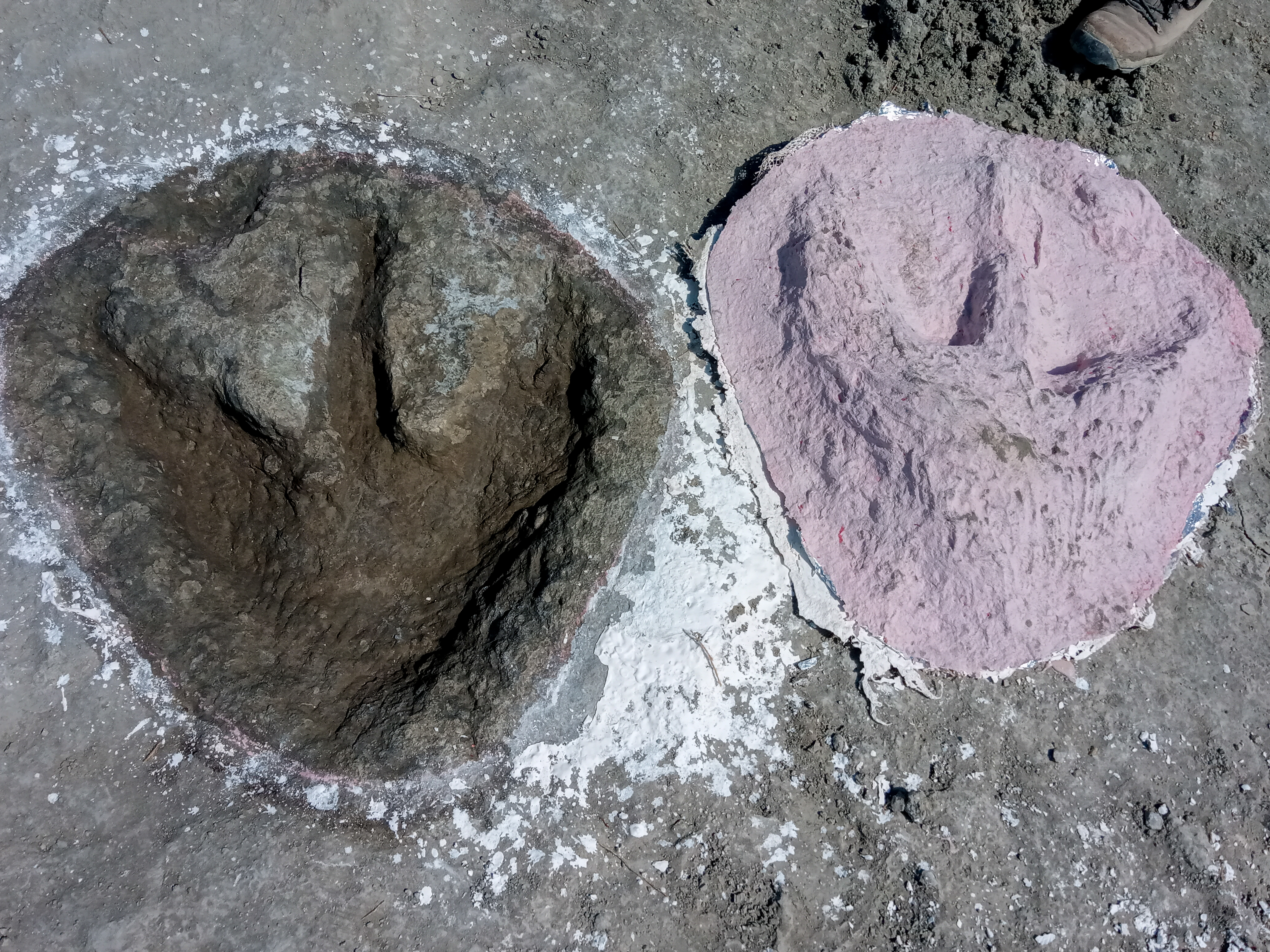When a quarry worker in Oxfordshire, England, noticed some “unusual bumps” beneath the site’s clay surface, he could never have dreamt that he was in fact following in the footsteps of dinosaurs. As it happens, the lumpy anomalies were made by some of the Middle Jurassic period’s largest beasts – including the ferocious Megalosaurus – and form one of the most significant collections of dinosaur footprints ever discovered.
Experts from the Universities of Oxford and Birmingham eventually uncovered around 200 footprints sprawled across the quarry floor, creating what they describe as a “dinosaur highway” made up of five enormous trackways. Thought to be around 166 million years old, the prints were left by at least two different dinosaur species at a time when Oxfordshire flanked a tropical sea and was dotted with shallow lagoons and mudflats.
“The preservation is so detailed that we can see how the mud was deformed as the dinosaur’s feet squelched in and out,” explained Dr Duncan Murdock from the Oxford University Museum of Natural History in a statement. “Along with other fossils like burrows, shells and plants we can bring to life the muddy lagoon environment the dinosaurs walked through.”
Researchers think four of the trackways were made by massive herbivorous sauropods, with the 18-meter-long (60-foot) Cetiosaurus being the most likely candidate. The fifth, meanwhile, bears the distinctive three-toed claw of the menacing carnivore Megalosaurus, which measured up to 9 meters (30 feet) in length and was the first dinosaur to be scientifically named in 1824 – exactly 200 years before this new excavation.
The longest single trackway extends for over 150 meters (492 feet), and the five sets of prints collectively make up the largest assemblage of dinosaur tracks in the UK. Located at Dewars Farm Quarry, the prehistoric highway adds to the already phenomenal collection of dinosaur footprints at the site, where 40 trackways were discovered in 1997.
Thankfully, technology has moved on considerably in the past few decades, and researchers were able to make use of drone photography in order to create 3D models of the newly discovered prints, documenting them in unprecedented detail. Using these digital replicas, the team hope to gain new insights into how these dinosaurs moved and behaved.
For instance, the tracks show that the Megalosaurus had a stride of about 2.7 meters (8.9 feet), with the spacing between footprints indicating that the prehistoric creature walked at a similar speed to modern humans – about 3 miles (3 kilometers) per hour. The sauropods appear to have traveled at about the same speed, and their tracks even cross those of the Megalosaurus at one point, raising intriguing questions about whether and how these different dinosaurs might have interacted with one another.

The Megalosaurus prints feature distinctive three-toed claws.
Image credit: Caroline Wood, University of Oxford
Details of the excavation will be highlighted in a new BBC documentary called Digging for Britain, which comes out on January 8. The prints are also set to feature in a new exhibition at the Oxford University Museum of Natural History.
Source Link: Gigantic 166-Million-Year-Old "Dinosaur Highway" Is Biggest Ever Found In The UK